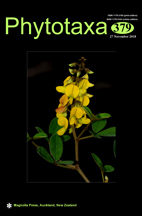Abstract
Nervilia Commerson ex Gaudichaud (1829: 42) is characterized by having prominent fan-shaped venation of leaves and developing flowers and leaves at different times and all above ground parts died back at the end of the growing season (Pridgeon et al. 2005). This genus comprised approximately 71 species, distributed from tropical, subtropical and warm temperate regions of Africa, Asia, Australia, and the Southwest Pacific islands (Govaert et al. 2017). The characteristic of ephemeral pattern of emergence tends to make plants overlooked in the field and under-represented in herbaria, and the temporal separation of the flowering and leafing phases makes complete or correctly matched collections rare (Seidenfaden 1978), confounding taxonomic understanding of the genus as a whole (Chen and Gale 2009). The genus was divided into four sections (Linervia, Vinerlia, Nervilia and Kyimbilaea) by Schlechter (1911, 1915), but Pettersson (1990a, b) sunk sect. Kyimbilaea into the sect. Linervia. Although revision of some confused species or new species have been published in the last decade (Gale et al. 2008, 2010, 2013, Eum et al. 2011, Jalal et al. 2012, Hsu et al. 2012), a comprehensive infrageneric delimitation combined with descriptions of morphological characters and molecular phylogeny within Nervilia is still needed.

